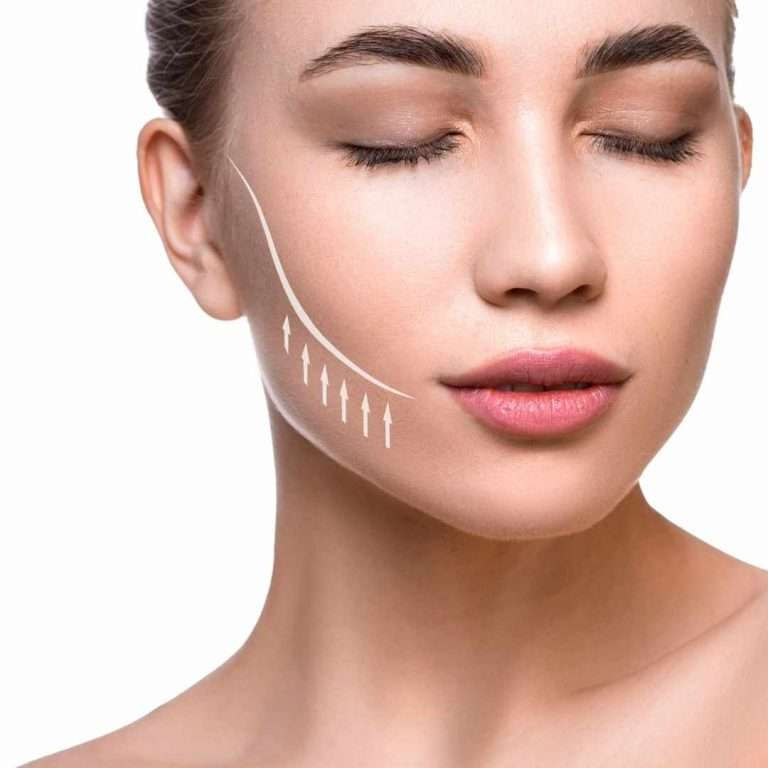Is Thread Lift Treatment Effective for Thin Skin?
- Royal Clinic
- Feb 11
- 4 min read
Thread lift treatment is a non-surgical cosmetic procedure designed to lift and tighten sagging skin using dissolvable sutures. These threads stimulate collagen production, helping to rejuvenate the skin over time. The procedure has gained popularity as a minimally invasive alternative to traditional facelifts, offering results with minimal downtime. While Thread Lift Treatment Dubai is widely used for facial contouring and lifting, its effectiveness for individuals with thin skin remains a topic of interest. People with thin skin often worry about potential complications, the visibility of threads, and whether the procedure can deliver the desired results.
Characteristics of Thin Skin:
Thin skin is often more delicate, prone to fine lines, and has less elasticity compared to thicker skin. Several factors contribute to thin skin, including:
Aging: As we age, collagen and elastin production decrease, leading to thinner skin.
Genetics: Some individuals naturally have thinner skin due to hereditary factors.
Sun Damage: Prolonged exposure to UV rays accelerates collagen breakdown, contributing to skin thinning.
Lifestyle Factors: Poor diet, smoking, and dehydration can weaken the skin barrier, making it thinner and less resilient.
Since thin skin lacks the same level of structural support as thicker skin, it may respond differently to aesthetic treatments like thread lifts.

How Thread Lift Works for Thin Skin:
A thread lift involves inserting biocompatible threads (typically made of polydioxanone (PDO), polycaprolactone (PCL), or polylactic acid (PLA)) under the skin. These threads anchor sagging tissue and stimulate collagen production, enhancing skin firmness over time.
For individuals with thin skin, the key considerations include:
Collagen Stimulation: The treatment promotes collagen synthesis, which can help improve skin thickness and elasticity.
Lifting Effect: Threads can provide an immediate lift, but the results may be subtler in thin skin due to the lack of sufficient underlying support.
Thread Visibility: In some cases, the threads may be more visible or palpable under thin skin, which could be a concern for certain patients.
Risk of Bruising: Thin skin is more prone to bruising and may take longer to heal after the procedure.
Best Thread Types for Thin Skin:
Choosing the right type of thread is crucial for achieving optimal results in thin skin. The most common thread options include:
PDO Threads: These are commonly used for lifting and tightening the skin. They dissolve within six months but continue to stimulate collagen production.
PLA Threads: These threads last longer than PDO and provide additional collagen stimulation, making them beneficial for thin skin.
PCL Threads: These offer the longest-lasting results and encourage long-term collagen growth, which can help thicken thin skin over time.
For thin skin, finer threads with smooth or barbed designs are often recommended to prevent excessive strain or discomfort.
Expected Results and Longevity:
Patients with thin skin can achieve moderate lifting and improved skin texture from a thread lift. However, the results may not be as dramatic or long-lasting as in individuals with thicker skin. The effects generally last between 12 to 18 months, depending on factors such as skin condition, lifestyle, and the type of threads used.
While immediate lifting can be seen post-procedure, the most significant improvements develop over the following months as collagen production increases.
Potential Risks and Side Effects for Thin Skin:
Like any cosmetic procedure, thread lifts come with potential risks. Those with thin skin should be particularly aware of:
Thread Visibility: Thinner skin may not conceal the threads well, leading to a slightly unnatural appearance.
Skin Irregularities: Dimples or uneven skin texture may be more noticeable in thin skin.
Bruising and Swelling: The healing process might take longer due to fragile blood vessels.
Temporary Discomfort: Some patients experience tightness or mild discomfort post-treatment.
Who is a Good Candidate?
Thread lifts are most effective for individuals experiencing mild to moderate skin sagging. Ideal candidates with thin skin should:
Have realistic expectations about the results.
Be in good overall health with no significant skin conditions.
Follow proper skincare and post-treatment care for enhanced healing.
Be willing to combine the procedure with other skin-rejuvenating treatments for optimal results.
Enhancing Results for Thin Skin:
To maximize the benefits of a Thread Lift in Dubai, individuals with thin skin can incorporate additional skincare treatments and practices, such as:
Microneedling: Helps boost collagen production and improve skin texture.
Hydration and Nutrition: A balanced diet rich in vitamins C and E can support collagen production.
Topical Retinoids: Encourage cell turnover and skin thickening.
Regular Sun Protection: UV exposure accelerates collagen breakdown, so using sunscreen is crucial.
PRP Therapy: Platelet-rich plasma (PRP) can further enhance collagen stimulation and improve skin thickness.
Alternatives to Thread Lifts for Thin Skin:
If a thread lift is not the best option, other treatments may provide similar or even better results for those with thin skin:
Dermal Fillers: These can add volume and support to the skin, reducing sagging.
Radiofrequency (RF) Skin Tightening: Stimulates collagen without the use of threads.
Laser Resurfacing: Improves skin texture and firmness over time.
Ultherapy: Uses ultrasound energy to tighten the skin without invasive procedures.
Conclusion:
Thread lift treatment can be effective for individuals with thin skin, but results may be more subtle and require additional skincare support. While the procedure stimulates collagen and provides lifting benefits, those with thin skin should carefully assess whether the potential risks, such as thread visibility and bruising, are worth the trade-off.
For the best outcomes, a consultation with a qualified dermatologist or cosmetic surgeon is recommended to determine the most suitable treatment approach. Combining a thread lift with complementary treatments and a proper skincare routine can help achieve firmer, healthier-looking skin.





Comments